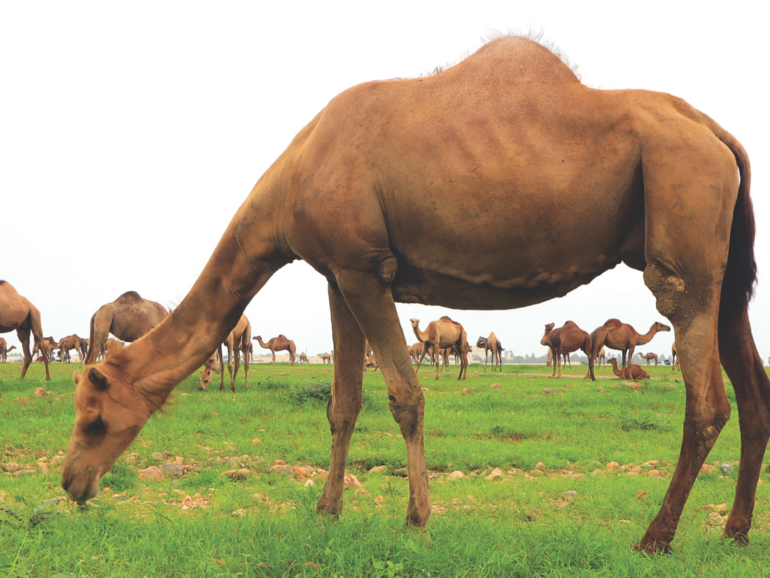 By ANIRBAN RAY
By ANIRBAN RAY
Salalah – In a curious connection, as the plains of Salalah turn a vibrant green, demand for camel milk and meat goes up. Coinciding with the increase in tourism during khareef, shops – roadside stalls to high-end restaurants – can be seen doing brisk business selling camel meat delicacies.
Restaurant owner Khalid al Amri sells camel meat all year round. However, demand is highest during khareef. “Tourists come to my restaurant, and even some street vendors, for an authentic taste. We specialise in camel biryani, shuwa, sawarma, burgers and wraps. Prices vary from RO1 to RO15.”
The camels normally graze on the mountains and come down to the plains in the monsoons, when fog and heavy rains disrupt their habitat.
Feeding on the grass in the plains – by now lush green due to the rains – increases milk production significantly. Camel herder Musalman Yaqoob said, “This milk is of very high nutritional value.
Owing to the abundance of fresh grass, the camel eat to their heart’s content, and ultimately produce more milk.”
The demand for camel meat delicacies is met by the availability of more animals in this season.
However, the annual migration from the mountains to the plains isn’t always uneventful.
“Many camels fall down the mountains while descending to the plains. It is very difficult to carry or even help the injured animals with broken legs,” Musalman informed.
“Some camels lose balance and fall. Many struggle and manage to get up, but others unfortunately succumb to injuries from their fall.”
Musalman described the loss of even a single animal as a “very sad and dreadful time” for the herdsmen. “We have to take care of the entire herd of over 100 camels and cannot carry one animal all along. We have no option but to slaughter them.”
Though the plains are full of camels at this time of the year, the shepherd easily recognise their animals. “We can identify our camels out from a herd of a thousand others,” said Musalman’s brother Mohammad.
Herdsmen use moles, odour, vocalisation and even the temperature of the animals’ neck for identification.
“We have specific sounds that are actually names for the camels and when we make these noises, they recognise their owner.”
Bulls sell for RO500 to RO1,200, depending on age and body structure. For meat, male animals are mostly slaughtered, while females are left to graze and milked. Pregnant cows are always given special care with one herdsman dedicated to its care.
“We sell camel milk to shops and supermarkets. Not everyone can milk a camel. These animals are very sensitive and only allow their owners to milk them,” Musalman said.
He described camels as “very arrogant like small children, needing pampering”.
In recent times, news of camels injected with hormones to increase meat and milk production have become common. “Bulls are given injections to beef up for more meat, and cows to produce extra milk. But this is not good – for the animals nor people who consume such meat and milk,” said another herdsman Abdullah al Affifi.
“We as shepherds can judge the difference, but others can’t tell the difference between an injected and a naturally raised camel. It is a tempting prospect but unethical. We love our animals and don’t engage in such practices,” Affifi said.
© 2021 Apex Press and Publishing. All Rights Reserved. Powered by Mesdac